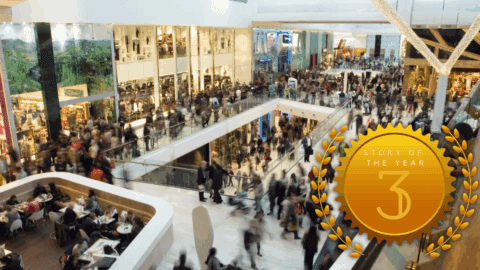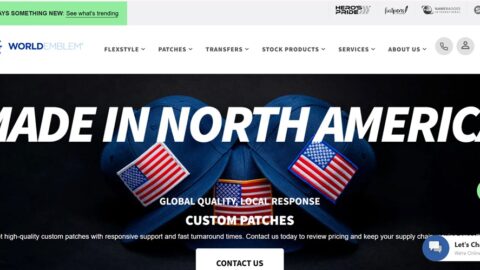The COVID pandemic caused significant disruption to 80% of supply chains around the world, with the result that nearly half (47%) of supply chain operations will be overhauled, according to data from Kearney and the World Economic Forum. But as dramatic as these figures are, they still understate the size and scope of supply chain challenges.
“Almost 100% of supply chains will have to deal with the disruptions and pandemics that are coming down the pike,” said Suketu Gandhi, Partner and Global Tower Leader – Digital Supply Chain at Kearney. “Supply chains have long been judged on cost and performance, but the third element that has come into play is their resilience.”
Gandhi was one of the speakers on the Retail TouchPoints webinar titled Achieving Supply Network Resilience: The 3 Benefits of Location Intelligence, now available on-demand. He joined two speakers from sponsor company Esri: Gary Sankary, Retail Industry Manager, and Cindy Elliot, Head of Commercial Industry Marketing.
Gandhi presented results from the Kearney Resilience Stress Test, which has been applied to 45 companies with a combined $500 billion in spend. Using the test results, Kearney has identified five key resiliency challenges that supply chains face:
- High dependency on key suppliers, often in limited geographies;
- Redundancy lacking due to complex product portfolios;
- Planning departments that are slow to use real-time data for decision-making;
- The need for a pickup in adoption for multichannel/ecommerce requirements; and
- Optimization that is siloed versus end-to-end across the supply chain.
Three Strikes and Customers are Out (of Your Store)
The stakes involved in crisis-proofing supply chains are high. “During my years at Target, we did study after study and determined that we had three chances to be out-of-stock with a customer,” said Sankary. “It depended on how important the item was to the customer, but if you were out of it three times, they took their entire basket with them. Retailers learned this during the pandemic with some very key items, and also that it’s really detrimental and very expensive to bring them back into the store.”
Retailers seeking to avoid losing customers, or worse, need to prioritize their resilience-building activities based on their current capabilities. “There’s no one-size-fits-all; people have to make a choice,” said Gandhi. “For example, there are organizations that don’t have control over their suppliers, so they need to put that as a limitation in their planning. They might counteract with their financial strength, or their ability to store more product or to do break packs to ensure customers get what they need. Organizations need to protect against the areas they they’re most vulnerable to.”
Multiple Roles for Location Intelligence in Supply Chain Resilience
Esri’s Elliot noted that supply chains, or supply networks as she prefers to call them, are “operating in a world of perpetual disruption, both routine and catastrophic, and companies that can’t address these challenges as an ecosystem” will become less competitive over time. “The context of location intelligence is a common thread that connects all parts of the ecosystem,” she added.
Elliot presented the example of a global manufacturing retailer that, when suppliers, production environments, wholesalers and its own direct stores are all taken into account, operates in 160 countries, as well as through home improvement and big box retailers. Because this company already had a location intelligence solution in place, it was able to expand its use for monitoring, and responding to, the often confusing and fast-changing demands of the COVID pandemic.
“They had been using location data for market segmentation and customer analysis, but when COVID hit, they expanded to a web-based infrastructure for location intelligence,” said Elliot. “They were able to digitize and visualize their entire global supply network very quickly, so they had the ability in February 2020 to address strong supplier requirements coming out of China that kept changing. They could also shift and reassess where their inventories were going to be flowing, and monitor developments as markets reopened, for example visualizing where the U.S./Mexico border was closing and reopening.”
Elliot provided four quick steps that retailers and other supply network partners can take to boost resilience:
- Map supply network components by digitizing key elements onto interactive global maps;
- Visualize real-time supply network impacts;
- Assess dependencies; and
- Communicate dynamic, live information to supply network partners.
For longer-term solutions, the webinar speakers were cheered that more organizations are acknowledging that money spent on supply chain resilience is a worthwhile investment, and that supply chain executives now have an important seat at the corporate table.
“It used to be that the head of supply chain would get a call when something wasn’t working — they would be called into the CEO’s office when a shipment was late,” said Gandhi. “Now, supply chain is integrated into the product design and the customer experience.”
Companies are realizing that “the financial cost of running a supply chain is significantly smaller than the loss of a sale or disappointing a customer,” Gandhi added. “That trade-off is fundamentally changing.”













